In this post, Dr Caroline Radcliffe (University of Birmingham), discusses the dramatic quality of Dickens’s writing. She reflects on Dickens’s own dramatised reading, Sikes and Nancy, adapted from Oliver Twist, of which she directed a performance at the BMI in 2017 as part of the CLiC Dickens Day. This is a post of the BMI Lockdown Life series, published in collaboration with the Birmingham & Midland Institute blog. Join the conversation at #BMILockDownLife – and if you’d like to propose a guest post related to teaching, research, and/or anecdotes of 19th-century culture and literature, please contact the editorial team via email or Twitter.
As a theatre historian researching Charles Dickens’s dramatic performances, I recently re-read a Dickens letter in a new light as it now resonates with my own feelings as a performer and writer during Lockdown. In the following extract from a letter dated 7 June, 1855, written during the rehearsal period for his forthcoming production of Wilkie Collins’s play, The Lighthouse, staged in his house at Tavistock Place, Dickens describes the pleasure he takes in acting:
It is a freak I have taken into my head to try how picturesque and real we can be in my children’s Schoolroom. The real Theatre is so bad, that I have always a delight in setting up a sham one—besides deriving a pleasure from feigning to be somebody else which is akin to the pleasure of inventing—with the addition of the odd novelty that this sort of invention is executed in company. (C. Dickens, 7 June 1855)
Dickens differentiates between the acts of writing and acting, defining both as pleasurable works of invention. But the key to his enjoyment of acting is that it is an invention executed in company as opposed to the solitary process of writing.
Executed in company might be taken to mean the company of other actors but also the company of those in the audience. The components of live performance that Dickens found most rewarding then were the kinaesthetic relationships between himself and his fellow actors and between himself and his audience. Hundreds of Dickens’s letters attest to the importance of the actor/audience dynamic. Dickens judged the effectiveness of his acting by gauging the changing levels of audience empathy, carefully noting spectators’ responses to his performance. While, for one performance, he found the audiencefor The Lighthouse “flat” – despite the fact that they appeared to be “crying vigorously” (C. Dickens, 19 June 1855), on the following night the performance was made “perfectly wonderful” by “such an audience”, making for “a brilliant success from first to last!” (C. Dickens, 20 June 1855).
His ability to “read” his audience not only allowed him to measure the effectiveness of his theatre performances but also enabled him to move his readers. We know from his daughter, Mary, that while writing his novels, Dickens acted out the gestures, facial expressions and speeches of his characters in front of a mirror in his study. (M. Dickens, 2014: 48). This process of acting, or “feigning to be somebody else” contributed to the invention of written characters who became both “real” and “picturesque”. In Corpus Stylistics and Dickens’s Fiction, Michaela Mahlberg describes how Dickens uses natural body language in his writing to authenticate characters even when they are part of a fictional world (Mahlberg, 2013: 119), but Dickens’s method of authenticating character was firstly to embody it and then commit it to paper, creating a thin division between his acted characterisations and his fictive inventions. These solitary acts of performance into writing were then shared with friends and family through reading aloud as illustrated in Pete Orford’s CLiC blog (Orford, 2020). Reading aloud in an atmosphere of support and friendship helped him to judge the affective impact of his written words in the same way that he was able to sense the impact of his acting on the emotions of a theatre audience. Gathering a small, physically intimate audience around him was a practice he would later establish to “test-run” his dramatic readings.
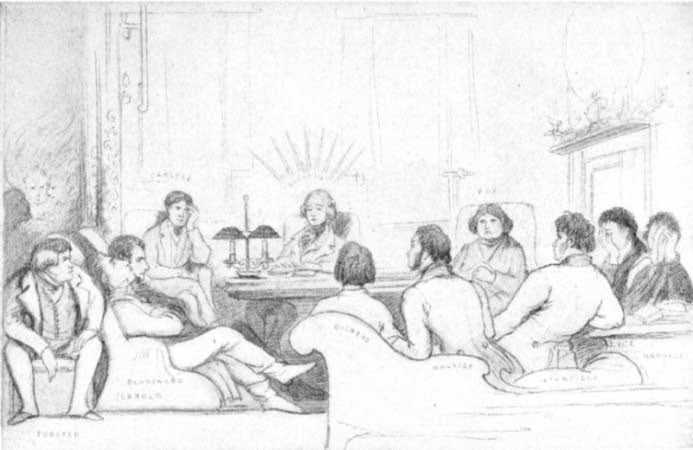
Unlike the early amateur theatricals in which Dickens took so much pleasure in performing with his friends, the public dramatic readings were performed as solo pieces. Dickens did not have the pleasure of his acting company to draw on. The success of the readings was entirely reliant on his ability to communicate with his audience, eliciting empathy through a combination of authentic written characterisation and his skill at physically and vocally conveying it.
In December 2017, I was presented with an opportunity to direct a performance of Dickens’s dramatic version of Sikes and Nancy as the closing event for the CLiC Dickens Day held at the BMI. Much of my research on Victorian acting seeks to revise a pervasive understanding of melodrama as a theatre form that uses exaggerated physical gesture, a declamatory vocal style and limited characterisation. Most of these assumptions are based on scathing contemporary criticism that was determined to devalue popular drama and literature in favour of an elevated national drama based on Shakespeare and the Classics. But my research has shown that many theatre companies actively worked against an exaggerated acting style, instead employing convincing realism and using naturalistic acting techniques. It may seem paradoxical to align dramatic texts that appear sensational and emotionally heightened with a naturalistic acting style, but actors such as Dickens understood naturalism as the realistic portrayal of character, “true to life”, however sensational the narrative might be. This use of naturalism is further emphasised through the naturalistic speech patterns found in Dickens’s writing.
For the CLiC event I chose the sensational reading that “did more to kill him than all of his work put together” (Collins, cited in Reeve, 1891) – Sikes and Nancy – Dickens’s terrifying dramatisation of scenes from Oliver Twist. “He has always trembled on the boundary line that separates the reader from the actor” stated The Times critic in 1868; by all accounts, Dickens’s ability to hold his audience so completely in his grasp excelled but the exhausting nature of his performance was a concern to all who witnessed it. I felt that Sikes and Nancy was a reading which contained all the elements of sensation but could still be acted “true to life”.
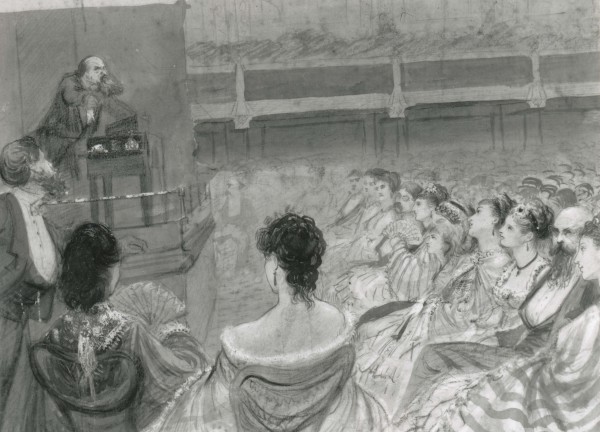
I approached the actor, Simon Vaughan, to do the reading. During the rehearsal process we discussed how he could make the reading effective without it coming across as “melodramatic” in the pejorative sense. Although my research is interdisciplinary, I had no knowledge or experience of corpus linguistics as a framework for analysis. We were therefore excited to find that our dramatic interpretation of the text could be greatly assisted by the CLiC team’s studies on body language and actions in Dickens’s texts. We decided the key to making the reading convincing was to “action the text” in both a literal and a psycho-physical sense. Some of these actions were already provided in Dickens’s marginalia (see C. Dickens, 1983, and an example on the British Library website): “beckon down”, “shudder”, “point”. Other actions within the text were underlined as performance cues while further words were doubly underlined for vocal emphasis. With these tools in hand, Simon set about creating a physical, gestural and vocal interpretation of the reading.
In order to make it closer to Dickens’s own dramatic reading, we had constructed a similar pedestal on which to lay the text in the manner of his own, personally designed pedestal. One of the problems that we had to consider was that this restricted Simon’s movement, if he was to read from the text, rather than memorising it, he would have to stay close to the pedestal meaning that his gestures and body movement were limited to a small spatial area. This further supported accounts of Dickens as having used a range of facial expressions and arm gestures and increased the necessity for establishing eye contact with the audience in order to draw them into the performance. In order to do this, Simon needed to be so familiar with the reading that he could dramatise passages without having to look down at it – Dickens used the text merely as an aide-memoire.
The testament to the dramatic power of Dickens’s writing and to Simon’s skill in interpreting it in a way that sought to capture elements of Dickens’s acting style, was evidenced through the BMI audience’s reaction. The reading is long, lasting around forty minutes, yet you could hear a pin drop … aside from the vigorous crying two rows behind me.
© Caroline Radcliffe
Further reading
- Radcliffe, C. (2009). Remediation and Immediacy in the theatre of sensation. Nineteenth Century Theatre and Film, 36(2), 38–52.
- Radcliffe, C., & Gasson A. (Eds.) (2013). The Lighthouse by Wilkie Collins. London: Francis Boutle.
- Radcliffe, C. (Ed.). (2017). The Red Vial by Wilkie Collins. London: Francis Boutle.
- Radcliffe, C. (2014). The Song of the Wreck. Wilkie Collins Society.
References
- Dickens, C. (1855, 7 June). Letter to the Rev. Whitwell Elwin.
- Dickens, C. (1855, 19 June). Letter to Miss Burdett Coutts.
- Dickens, C. (1855, 20 June). Letter to Clarkson Stanfield.
- Dickens, C. (1983). Sikes and Nancy and Other Public Readings. Oxford: Oxford University Press.
- Dickens, M. (2014). My Father as I Recall Him. Cambridge: Cambridge University Press. (original work published in 1896). [full ebook version available from Project Gutenberg]
- Miltoun, F. (1903). Dickens’ London. L.C. Page & Company, Boston, MA.
- Mahlberg, M. (2013). Corpus Stylistics and Dickens’s Fiction. London: Routledge.
- Orford, P. (2020, May). Bitesize Boz: Reading Dickens in instalments online [Blog post]. University of Birmingham: CLiC Fiction Blog.
- Reeve, W. (1891). From Life. George Robertson and Company.
- Times, 17 November 1868.
Suggested citation: Radcliffe, C. (2020, June). Sikes and Nancy: Dickens and audience [Blog post]. University of Birmingham: CLiC Fiction Blog.
This is an extended version of an article written for this week’s Birmingham perspective.
Enjoyed this post? The Birmingham & Midland Institute has set up a fundraising campaign to “offset the income which would usually keep the BMI running as the social and cultural hub that it should be, and encourage you to donate to what is an important lifeline for many older people in our society.” Check out their fundraiser here.

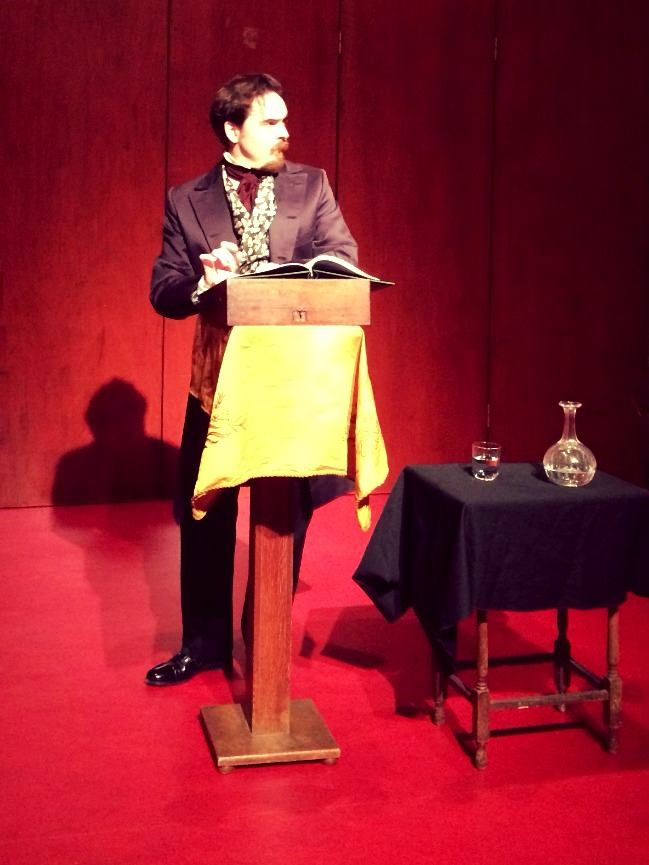
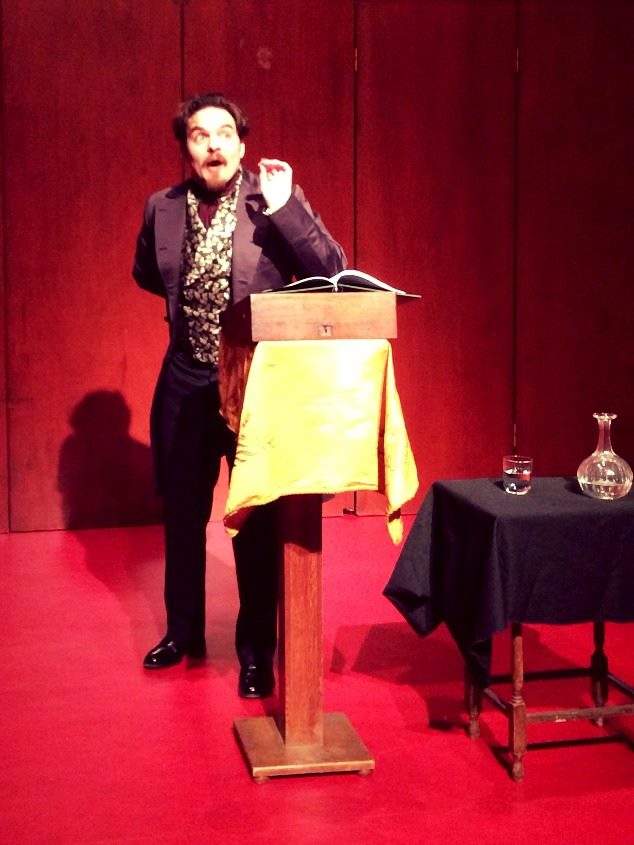
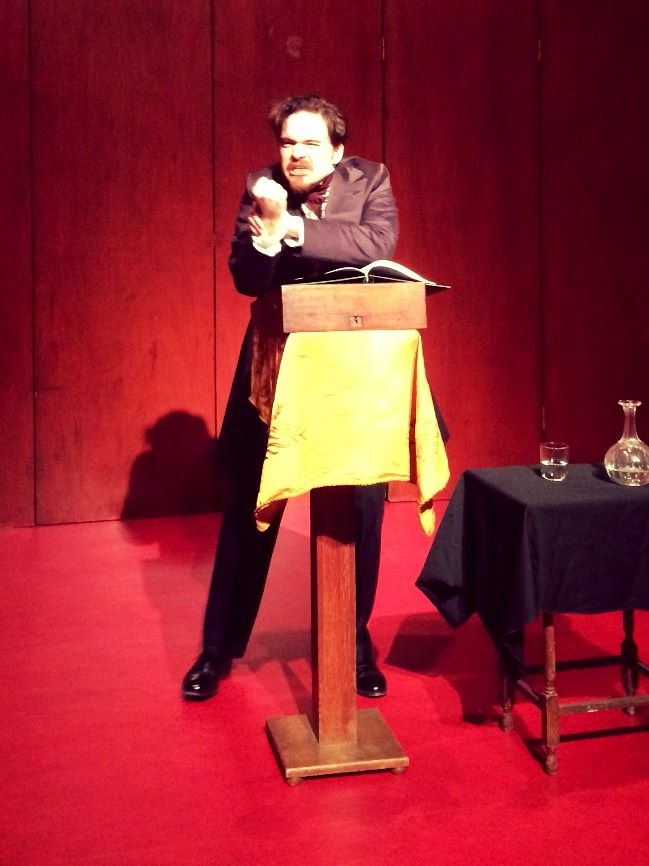
Re your interest in the relationship between Dickens the writer and Dickens the public reader, it’s worth reflecting on Dickens’s remark when he acted the main role in the play The Frozen Deep: ‘the interest of such a character to me is that it enables me, as it were, to write a book in company instead of in my own solitary room, and to feel its effect coming freshly back upon me from the reader’ (he underlined ‘to write a book in company’). I tried to recreate the experience of watching Dickens perform ‘Sikes and Nancy’ (based on eye-witness accounts) in my book Charles Dickens and his Performing Selves, as well as explore Dickens’s apparent naturalism as a performer, even of high-melodrama pieces — as you suggest. Worth bearing in mind that he seldom performed in theatres in all his nearly 500 performances, and seems never to have left his reading desk: the readings were always to be amplified drawing-room events (not ‘theatre’), and thereby consistent with codes of respectability.
Malcolm Andrews, thankyou so much for drawing my attention to Dickens’s remark re. ‘writing a book in company’. I wish I had been aware of this when I wrote the blog as it further illustrates the importance of audience response to his writing. I do have your book and will return to it again! As you correctly say, Dickens avoided acting in professional theatres – for the amateur production of Wilkie Collins’s play ‘The Lighthouse’ he preferred to build his own theatre in his house at Tavistock Square and for the professional production of 1857 he handed the lead role over to Frederick Robson of the Olympic Theatre.